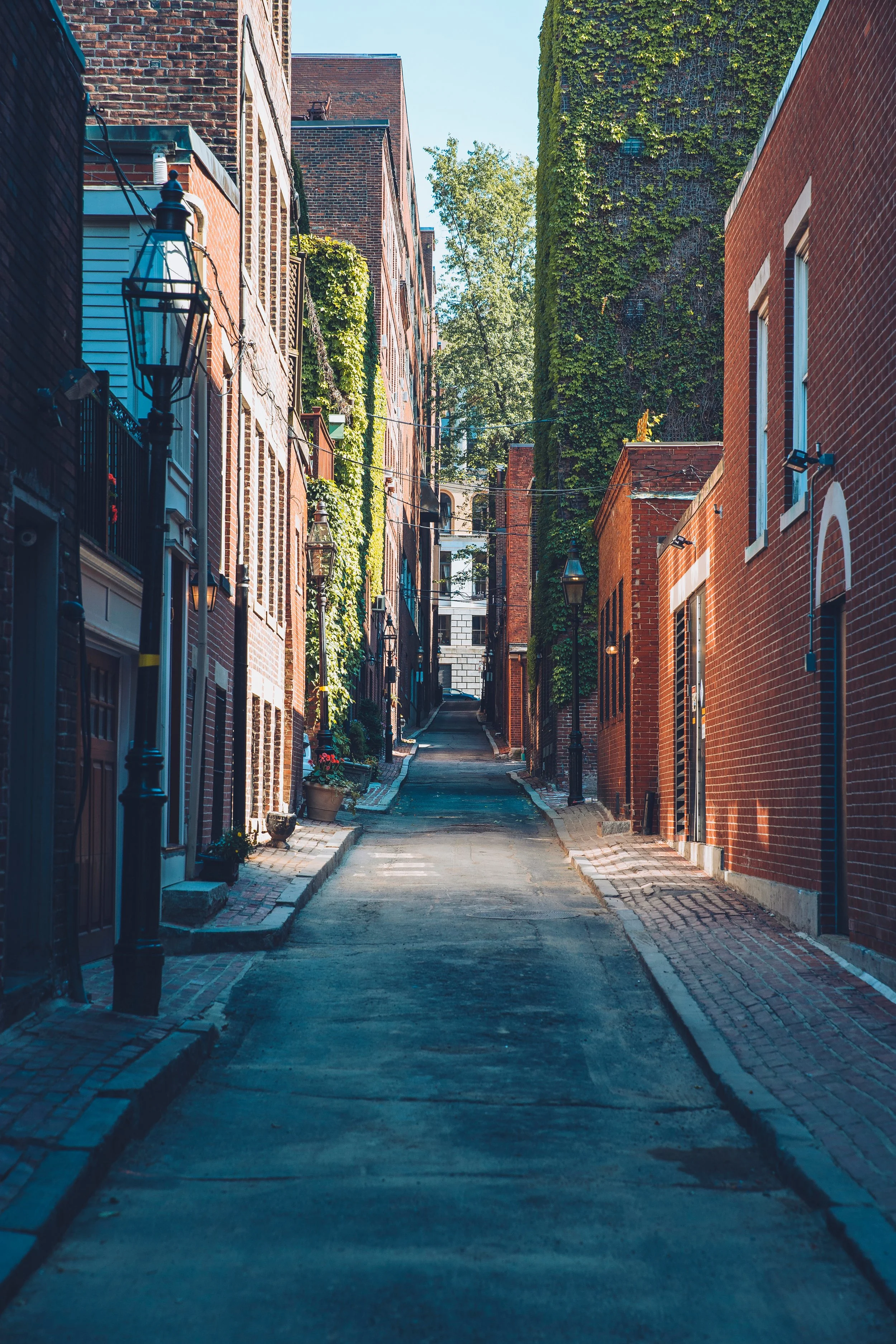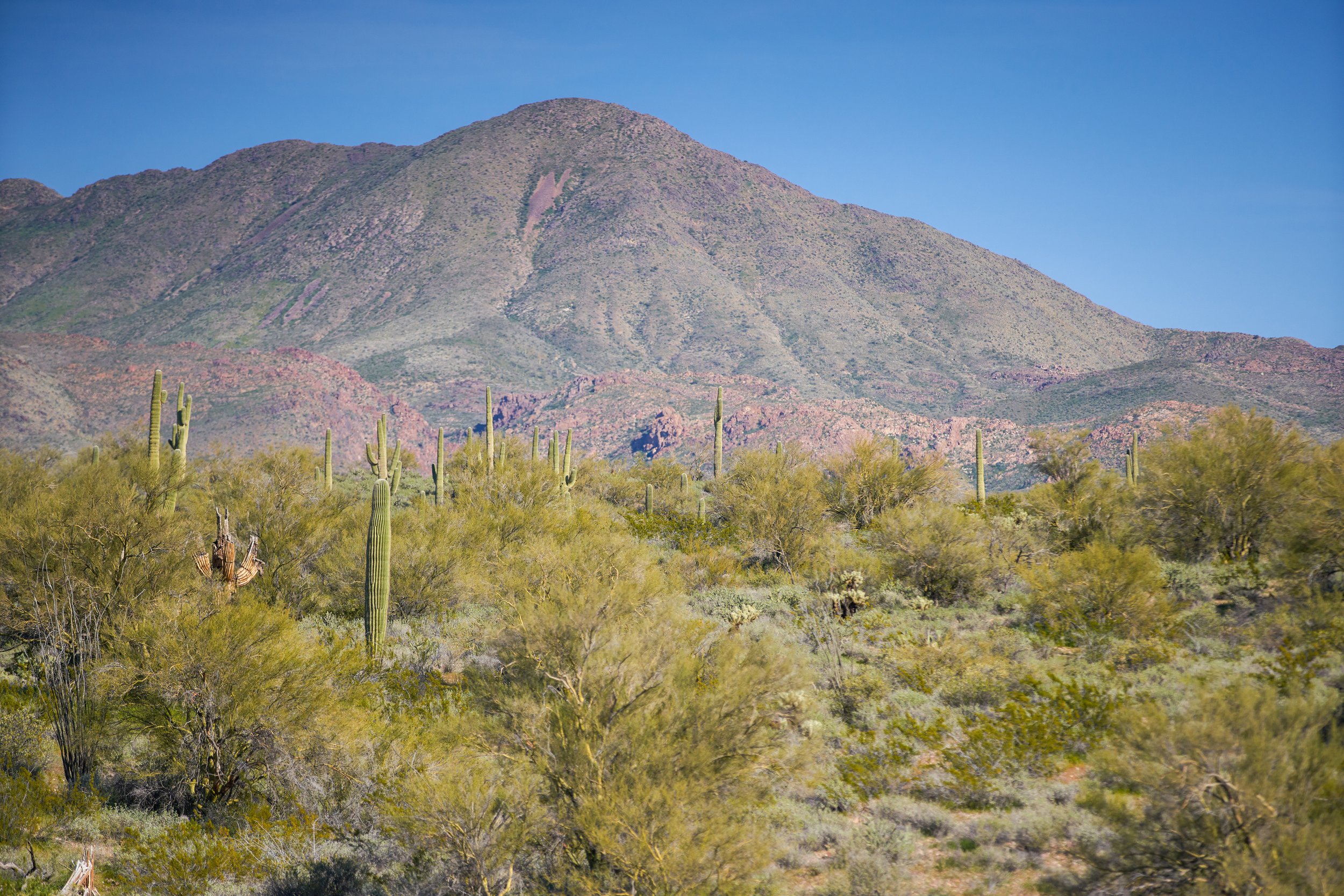Telephoto Lenses for Landscapes
/Wait! What? Everyone knows that to shoot a landscape you must use a wide angle lens!
I don’t know if that is a “known” thing but in any case it’s not correct.
A landscape photograph is an environmental study. The goal of any successful landscape is to draw the viewer into the photograph, so help the viewer enter the photograph mentally and to be “there”. A postcard may display a landscape but that’s a lot different than being IN a landscape.
Has it ever happened that you made a landscape image because you were blown away by what you saw but when you got home, the image felt flat and unimpressive, maybe even forgettable?
You Are Not Alone
I expect so because this is one of the most common frustrations with landscape photography. The camera store answer is always “get a wide angle lens” and I won’t go into why that’s a BS response, that topic is well covered in episode 144 of the Make Better Photos and Videos podcast where Gordon discusses why it’s not guaranteed to be true.
A landscape in order to draw the viewer inside needs to have three constituents that are sharp and communicative. A foreground, a mid ground and a background. You can, and should think of them as independent critical elements of a landscape. Any one of them missed will result in a less impressive image.
If this sounds like the scene as a whole is the one subject, you are correct. A scene with a single unique element is not a landscape at all because the goals is to direct attention to the one element and so it should be the biggest and brightest thing. That image, however wonderful, is not a landscape. So a street scene can actually be a landscape if the scene is the subject as a whole.
What Goes Into a Landscape?
The foreground gives the viewer the place to stand or sit to see the scene. The mid ground is what the viewer sees when standing in the foreground into the middle distance and the background is the rear boundary of the landscape to keep the viewer in it. All pieces are necessary and no one is more important than any other. The entire scene is the ONE subject.
Use of an inappropriate lens and depth of field setting can make the foreground be out of proportion and the background so tiny any magic it had in your mind is gone.
This is why so many landscapes with mountains in the background are so disappointing. The use of the wrong lens, typically a wide angle, which exaggerates perspective distance, makes the giant mountains look like anthills and they take up so little of the image as to be nearly irrelevant.
Do This Instead
Stop trying to get everything into the image. Keep it simple and focused for the viewer. Compose such that you can influence where the viewer should be looking. Use the effect of perspective compression to bring the background closer to the foreground. The way to do this is with a telephoto lens.
A telephoto lens does not actually do any compression. It creates the illusion of compression and that is what you are looking for. Contrary to some pundits, this is not distortion, it is very natural and does what your mind’s eye does.
When you look at a landscape with a mark one mod zero eyeball, you don’t actually look at the whole thing. You look at the elements and see them independently. That is normal and human. It is evolutionary. When you look at the foreground you expect sharp detail because there could be a predator very close. The middle distance tells us about what could get close very quickly, and the background tells us what we are moving towards or what could be coming from that distance. Our brain zooms in on each element in microtime so while we say we are seeing the entire landscape, we are not. We are seeing many elements assembled as a composite in the brain. This is survival, not some floaty instinct. Those without that developed skill got dead and didn’t create more copies of themselves.
Moreover we bias towards the foreground. That’s why advanced driving classes always emphasize looking far ahead, because your brain is going to make you check the foreground anyway and looking far ahead gives you time to prepare. It’s a learned skill to do so.
A landscape, shot with a telephoto lens
Why a Telephoto?
The telephoto lens allows for this in a two dimensional image. It will require you to approach photographing a landscape differently. You will be in a different place physically because you will still need enough depth of field to keep all elements in focus. Instead of standing in the field of wheatgrass with your wide angle, you will stand back from it, and use the illusion of compression to put it in the foreground. This compression illusion will also reduce the effect of the background being pushed far away and make it appear closer.
How can this be true? Look to images in the National Geographic as examples. Those photos of the Namib desert with the sea of tall dunes to the horizon? Shot with a telephoto lens with the photographer as close to the near dune as possible to keep it and everything beyond it in focus. That photo of canoes at a dock with the Rocky Mountains RIGHT THERE from Lake Louise? Telephoto lens.
How long a telephoto? The scene and story you want to tell will decide. Don’t know where to start? Try starting with a 70-200 full frame equivalent but don’t let that become a box. I have made successful landscapes at 400mm FFE and I have made them at 35mm FFE. It all depends on how far away the background is and what I need to do to pull it in closer while keeping the requisite foreground elements tack sharp.
Sharp foreground, middle ground and background. The haze shows distance but the lens choice pulls the distant mountains “closer” A very effective implementation of the concept.
Note that just because you are using a telephoto, you don’t get to ignore the requirement for sharp foreground. Your viewer still needs a place to stand. If that’s not there, you don’t have a landscape image.
Good shooting!
Do you have an idea for an article, tutorial, video or podcast? Do you have an imaging question unrelated to this article? Send me an email directly at ross@thephotovideoguy.ca or post in the comments. When you email your questions on any imaging topic, I will try to respond within a day.
If you shop with B&H Photo Video, please consider doing so through the link on thephotovideoguy.ca as this helps support my efforts and has no negative impact whatsoever on your shopping experience.
If you find the podcast, videos or articles of value, consider clicking the Donation tab in the sidebar of the website and buy me a coffee. Your donation goes to help me keep things going.
Click this link to submit your questions
I'm Ross Chevalier, thanks for reading, watching and listening and until next time, peace.











